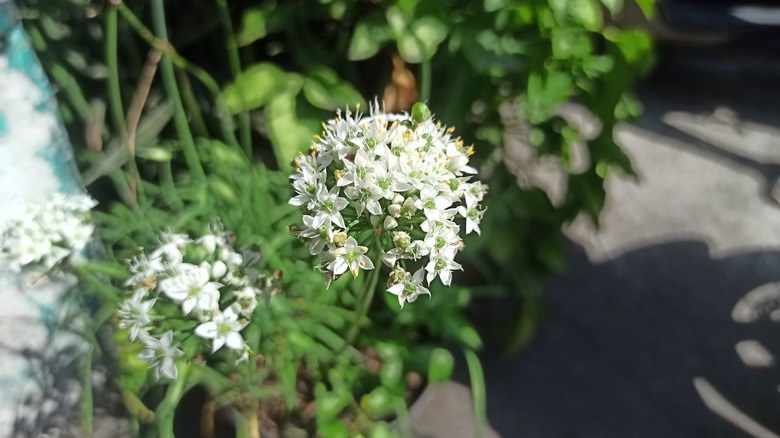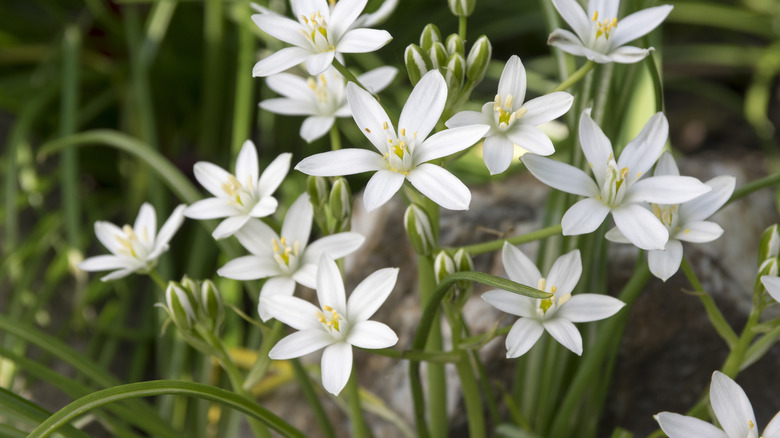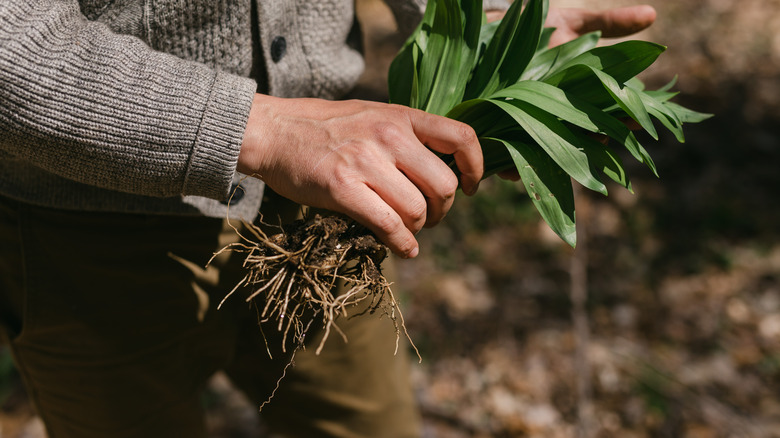Don't Mistake This Invasive Grass-Like Flower As Wild Onion In Your Lawn Or Garden
Wild onions (allium canadense) are a delicious and nutrient-dense herb you can add to soups and salads, but they have poisonous lookalikes that are dangerous to humans and animals. Star of Bethlehem (Ornithogalum umbellatum) has the same grass-like leaves and similar small white flowers as white onions, and they can be found sprouting up in lawns, forests, and roadsides.
When ingested, Star of Bethlehem can cause vomiting, diarrhea, difficulty breathing, and, in severe cases, even death. There is no known antidote for the toxin, which makes it all the more important to learn how to identify and avoid the toxic plant.
Both Star of Bethlehem and wild onions spread easily, tolerating just about any light and soil and conditions. Because both easily become weedy, it's possible you have these invasive flowers in your lawn even if you never intentionally planted either. Since Star of Bethlehem looks so much like the tasty and perfectly safe wild onion, it's important to learn the difference between them.
How to identify Star of Bethlehem
Like wild onions, Star of Bethlehem spreads via clumps of bulbs underground. Maxing out at about a foot tall, it features clusters of long, thin leaves that stand upright like grass. In spring, small, white star-shaped blooms appear. Meanwhile, wild onions also grow to a height of about one foot, with similar grass-like leaves and white, star-shaped blooms that first appear in early spring.
So, how do you tell the difference? Look closely. On wild onions, the flowers emerge in a cluster at the top of a single stem. The shape of the cluster is similar to the puff of seeds at the top of a dandelion, though not always as perfectly round. On Star of Bethlehem, there will be a cluster of individual stems, each with just one flower at the end of it.
Another distinctive trait of wild onion is its noticeable oniony fragrance. In contrast, Star of Bethlehem will be nearly odorless or have a faint floral smell if in bloom.
Getting rid of Star of Bethlehem
Star of Bethlehem didn't get its reputation as an invasive plant for nothing. This toxic plant is tough to get rid of, as herbicides aren't very effective against it. But you can eventually eradicate the menace from your yard — the key is to make sure you dig up the bulbs along with the leaves and stems. Hand-pulling can end up breaking the leaves and stems, leaving the bulbs in the ground.
Use a shovel to dig up the plant, then inspect the soil for small bulbs that might have been left behind. You want to make sure you remove as many bulbs as possible, but know that you will probably miss some. Next spring, repeat this process to catch any missed bulbs before they have a chance to divide and spread. Continue this annual tradition until you go a full growing season without spotting a single clump of Star of Bethlehem.
Don't toss Star of Bethlehem into your compost bin — its bulbs can sprout in nutrient-rich compost. Instead, dump bulbs into your trash bin.


